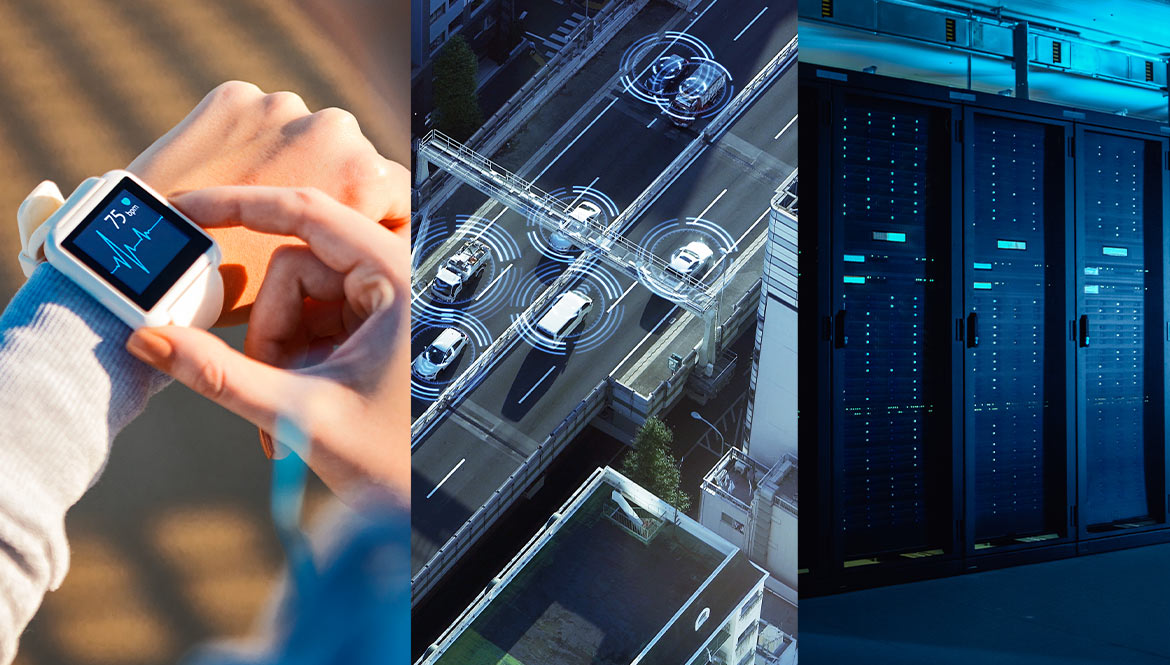In 2018, the global datasphere was estimated at 33 zettabytes and is expected to increase to 175 zettabytes by 2025, according to IDC. The true value of data is found in the insights it offers when it is disseminated to key stakeholders and acted upon to improve results. The use of artificial intelligence (AI) and machine learning for data analysis is forecast to substantially increase.
- Top Markets Primed for Surveillance AI Adoption: Safe and Smart Cities
Two verticals within the security sector where sensors, AI, and data will have a profound impact are safe and smart cities. The global city surveillance market surpassed $3 billion in 2017 and is expected to grow 14.6% annually from 2016 to 2021, with Shanghai, London, and Atlanta currently at the forefront of adopting citywide monitoring to enhance public safety. The reality is, the more cameras or sensors a city deploys, the more storage the system will need.
Today, the safe city market has evolved into the smart city market, fueled by the advent of 5G, IoT sensors, smart cameras with AI, and edge computing. IHS Markit predicts the number of smart cities will quadruple, from 21 in 2013 to 88 in 2025. At the heart of the smart city initiative is data—the capture, analysis, storage, and distribution of data to improve livelihoods.
- Long-Term Impact of AI Is Enhanced Healthy Living, Mobility, and Economic Growth
Within smart cities, healthcare, transportation, and local economies all stand to benefit from leveraging new sensors and data to improve efficiency and quality of services. Here’s a snapshot of some of the cutting-edge applications.
- Healthy Living. Doctors are starting to equip patients with lifestyle wearables. These devices act as IoT sensors that send notifications for specific health indicators, such as high blood pressure. By receiving real-time data on patient health, doctors can proactively prescribe treatment before a condition worsens or becomes a chronic illness.
- Mobility. Research from INRIX reports that Americans lose up to 97 hours per year because of traffic congestion. According to the McKinsey Global Institute, metropolises using traffic sensors to improve traffic flow have the potential to reduce commutes by 15% to 20% and emergency response times by 20% to 35%. Autonomous vehicles enabled with vehicle-to-vehicle and vehicle-to-infrastructure communication enhance pedestrian detection. All these scenarios rely on data to improve overall mobility and road safety.
- Economic Development. By utilizing smart cameras, sensors, and online apps, cities improve energy conservation, customer engagement, and community activism. Smart meters provide consumers with more frequent readings, empowering residents to make lifestyle changes to improve energy usage. Water consumption tracking systems can reduce residential water usage by as much as 15%, as indicated by McKinsey Global Institute estimates.
- Data Influx From AI Inspires New Storage Architecture and Solutions
As data continues to play a critical role in informing everyday life decisions, business operations, and smart city initiatives, the strategies used to preserve and protect this data must evolve. This starts with system integrators following two best practices: implementing the right storage architecture and hard drives.
Because of the sheer volume of sensors and surveillance cameras being deployed in today’s data hungry applications, cloud storage alone is not enough. Storage experts today are recommending IT 4.0, a new storage architecture that relies on both edge and cloud computing for data analysis. By deploying AI-enabled servers and appliances on the edge, which are located closer to the endpoints–cameras and sensors–that aggregate the data, data processing can occur on site. Powering AI-enabled NVRs with Seagate® SkyHawk™ and SkyHawk AI drives, which are optimized for mixed read/write workloads, allows insights to be delivered faster to customers so they can take action. Once data is transferred to the cloud, servers equipped with Seagate perform more efficiently, aggregating and archiving petabytes of data for deep learning and trend analysis. For users running applications that utilize hot data like facial recognition systems, blade servers with Seagate Nytro® solid-state drives enable instantaneous data availability for automatic detection and reporting. For more details on how to improve data flow and management from the endpoints, edge, and cloud, refer to our IT 4.0 Storage Framework infographic.
Key Takeaways: The Power of the Right Solution
Advanced storage technologies ensure that mission-critical data is readily available for analysis for smart, quick decision-making to enhance convenience, business processes, and the urban experience. By utilizing proven storage technologies from edge to cloud, as well as hard drives optimized for 24×7 workloads, integrators improve data management for their customer’s AI, surveillance, and smart city solutions. The result is a high-performing system that can deliver valuable information for years to come.
To learn more, read our white paper on “How to Overcome the Storage Challenges of Adopting Surveillance AI.”







